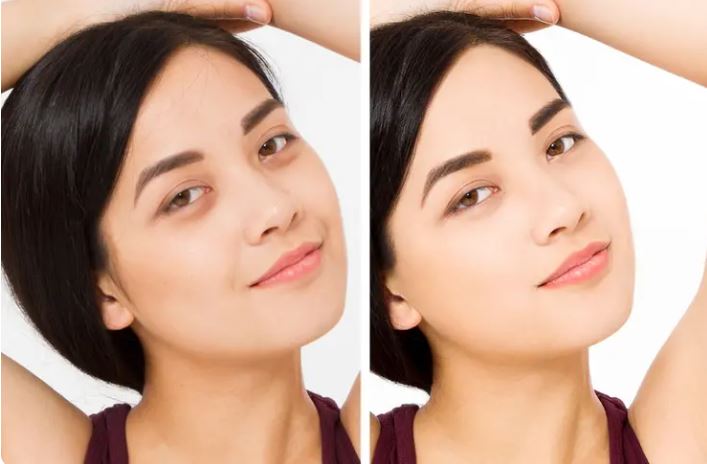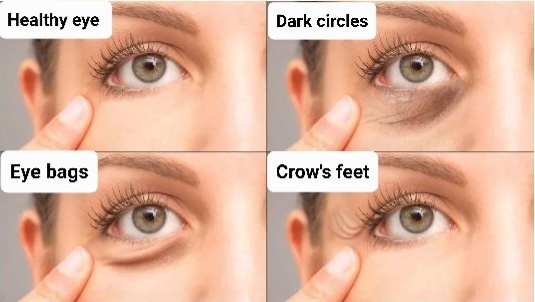Journal
What is Under Eye Fat Repositioning & Grafting?
2023-10-05
Eyes
Overview
The region around the eyes is one of the first spots to show the telltale warning signs of aging and a common complaint associated with aging is the appearance of under-eye shadows. This results from a combination of fat loss around the eyes and upper cheek sagging, which gives a tired and aged appearance to the face. Sometimes, when we observe it in quite young individuals, it is a hereditary feature. The appearance of a person might be negatively impacted by bags, hollows, or dark circles under the eyes. Thus, patients wishing to rejuvenate their eyes are generally looking for a solution to bags under the eyes. Fortunately, there are some cosmetic procedures that can address these problems to give a younger and more refreshed appearance.
The first thing that most people think of when trying to get rid of under-eye hollowness is obtaining a dermal filler injection, which is the most straightforward and perhaps least expensive method of replacing the lost volume under the eyes. The problem is that this filler will gradually degrade after a few months, giving you that sunken appearance once more. Thus, it is time to consider undergoing a more permanent solution: under-eye fat repositioning or under-eye fat grafting.

What makes the eyes look older?
Skin and muscle sagging: the lower eyelids that were previously attached to the bone become loose and gravity causes the eyelids to naturally droop.
Loss of volume: the volume of the muscle and the fat under the muscle decreases, making the eyes look sunken.
Loss of elasticity: skin elasticity tends to decrease with age. By checking the elasticity beforehand, the canthopexy is performed together to prevent the lower eyelid from turning outward (ectropion).
Protrusion of the bag under the eyes: when the strength of the muscle on the eyes decreases, the fat on the lower eyelid protrudes.
Deep tear-off tray: the eyes have a deep crease under the protruding undereye sac, called the tear trough. The tear trough is where the muscle is attached and it occurs when the tissues around this area become thinner. The hollow becomes more and more obvious.

What are under-eye bags?
As the name suggests, bags under the eyes are little bags that are situated beneath the eyes. They are made of fat. As we get older, the muscles that hold the lower eyelid become weaker, and orbital fat protrudes under the eyelid, giving the appearance of bags. Since the lower eyelid's skin is so thin, it is even more noticeable.
What are the causes of bags under the eyes?
Bags beneath the eyes can form for a variety of reasons, including the following:
- Genetics: some people have a susceptibility to getting bags under their eyes because of inherited genetic characteristics.
- Aging: as we grow older, the tissues surrounding our eyes may deteriorate, causing sagging and the development of bags.
- Water retention: swelling and bags can result from a buildup of water under the eyes.
- Stress and fatigue: chronic stress and a lack of sleep can make bags beneath the eyes look worse.
- Diet: an unbalanced diet rich in salt can promote water retention and contribute to the appearance of puffiness.
- Allergies: allergic reactions can cause swelling of the eyes, which can result in bags under the eyes.
What are the symptoms of bags under the eyes?
Bags under the eyes manifest themselves with visible symptoms, such as:
- Swelling or fatty deposits under the eyes.
- Tired or aged appearance of the face.
- Loose or sagging skin.
- Increased sensitivity of the skin under the eyes.
What is undereye fat grafting?
When fat is collected from another area of the body such as the abdomen, using a liposuction technique and then injected into the eyelid hollows, this procedure is known as fat grafting also known as an autologous fat transplantation, lipofilling, or lipo-injection. It is simply a minimally invasive procedure that replaces the lost volume of fat in the lower eyelid tear trough. This procedure is distinctive in that it employs your own tissue to fill skin depressions rather than artificial materials like hyaluronic acid. To remove some fat, the surgeon initially conducts liposuction on another bodily part, usually harvested from the abdomen, thighs, or buttocks, and then this fat is properly prepared and injected beneath the eyes. There is a likelihood of lid anomalies with this procedure, such as lumps and bumps, despite the fact that this is frequently utilized by cosmetic facial surgeons. However, using the person’s own fat, lessens the chances of rejection
What is undereye fat repositioning?
When local eyelid fat is repositioned to the surrounding eyelid hollow, it is referred to as fat repositioning or rearrangement, also known as transconjunctival fat repositioning. This method drastically reduces the possibility of anomalies. It is mainly performed to treat eye dullness and remove the lacrimal groove. By widening the protruding area under the eyes and moving fats, the lacrimal groove is eliminated. Under the eyes, in the inner corner, are where the incisions are done. Scars are therefore invisible, and healing is swift as no fat was harvested from other areas. Under-fat repositioning helps in getting rid of protruding bags under the eyes, enhances the look of the dark circles' area, and redistributes the under eyes fat evenly.
Which one to undergo: undereye fat repositioning or undereye fat grafting?
When veins are obvious due to a lack of fat or thin skin, black circles are more noticeable, which darkens the under-eye tone. In this particular situation, the patient's own fat is taken out and injected under the eyes to reduce the under-eye blackness, which is the undereye fat grafting procedure.
Under Eye Fat Repositioning is a surgical technique to level out the fat under the eyes that has protruding bulges, wrinkles, or shadows that make one look more aged.
The patient’s appearance will change to appear brighter and cleaner by smoothing out the lacrimal groove and bumpy fat layer evenly.
Who should have a fat transfer procedure or fat repositioning procedure?
Patients or individuals with any of the following conditions are candidates for fat transfer or fat repositioning procedures:
- Lower eyelid fat herniation.
- Those who suffer from tear-trough deformities.
- Those who are open to taking on potential dangers and difficulties.
- People who have realistic expectations for the results of surgery.

Process of fat graft (fat transfer)
The under-eye grafting process takes between thirty and sixty minutes to complete. Docfinderkorea makes sure to provide patients with a board-certified cosmetic surgeon. Because the plastic surgeon has to be skilled in fat grafting and definitely has a lot of experience, and the procedure needs to be performed appropriately in order to be effective and produce long-lasting results. This implies that all procedures, including harvesting fat, purifying, and preparing it, as well as determining the appropriate injection volume, must be carried out correctly.
Anesthesia will be given as the initial step, and the following steps will take place next:
Harvesting: for the harvesting or extraction procedure, manual liposuction techniques will be performed. This is because the intent is to extract fat cells rather than eliminate them, as is the case with laser and ultrasonic liposuction treatments. The surgeon will suction enough fat to be used later on in the under-eye area using a cannula.
Centrifugation: the fat that has been collected will be kept inside a centrifuge by the surgeon in a test tube. This is done in order to separate the collected fat from extra fluids like blood and oils. Dead fat cells and detritus from living fat cells will also be removed by the procedure.
Fat injection/transfer: the purified fat will be injected by the surgeon at the spot of the transplant. To achieve the perfect, natural look, they will inject a small quantity at a time and shape it.
FAQ
How safe is fat grafting?
Fat grafting or fat repositioning is typically regarded as safe when carried out by a licensed and skilled plastic surgeon. As with any other procedure, there are dangers, such as the possibility of infection, bleeding, scarring, or even lumps.
How long does fat grafting last?
Although the benefits of fat grafting can endure a long time depending on the individual, generally, the outcomes are long-lasting. A significant percentage of the transferred fat cells will endure and keep adding volume to the treated area.
Is the fat grafting procedure painful?
After the surgery, there may be slight discomfort and swelling, but most patients experience only minor pain.
What are the main benefits of fat grafting?
Grafting beneath the eyes has a number of advantages that could revitalize the area. Among these are, to name a few:
- The removal of eye bags and dark circles
- Adding volume to the hollow areas beneath the eyes
- No likelihood of allergic responses
- Rejection risk is negligible
- Long-lasting outcomes
- Gradual improvement of skin issues
Anti-aging procedures in Korea
Everybody hates eye bags. Despite eating healthily and getting enough sleep, they cause us to appear older and more fatigued than we actually are. They simply swell and can be a little annoying with the bulging bags and dark circles. If you are facing the same problem, you are not alone. Fortunately, there is a minimally invasive procedure that can save you time and money in getting long-lasting results: under-eye fat repositioning or under-eye fat grafting.
Back


